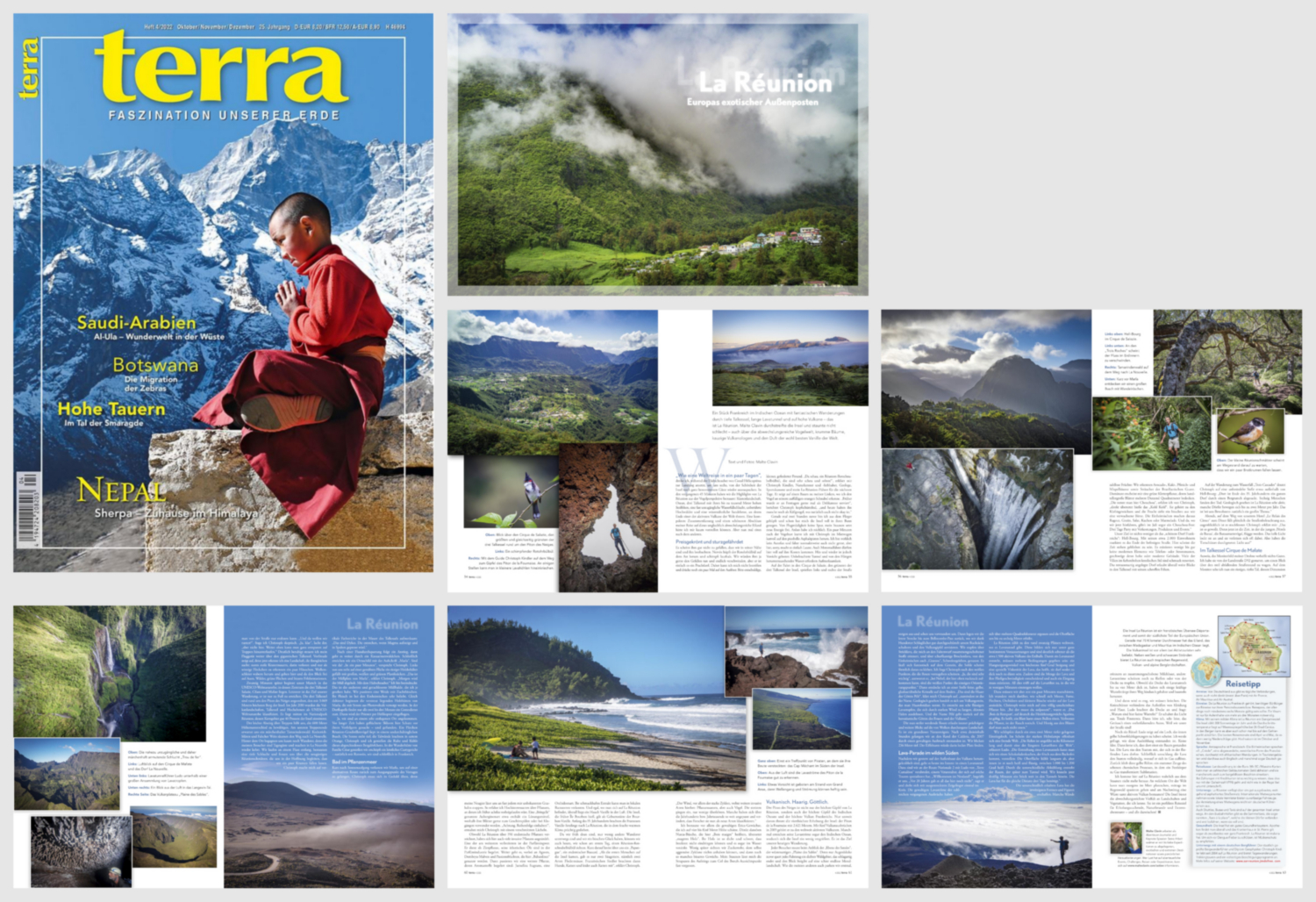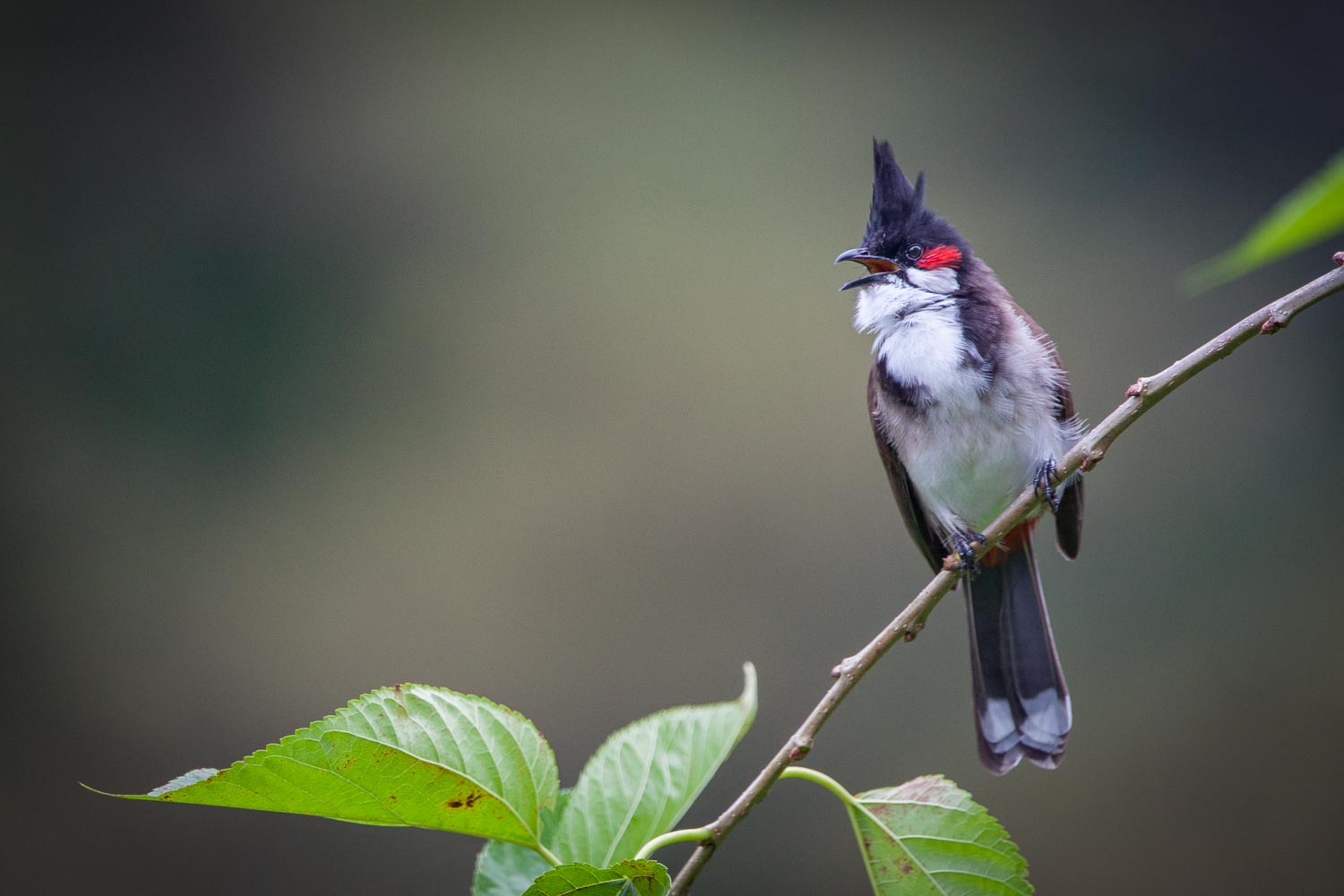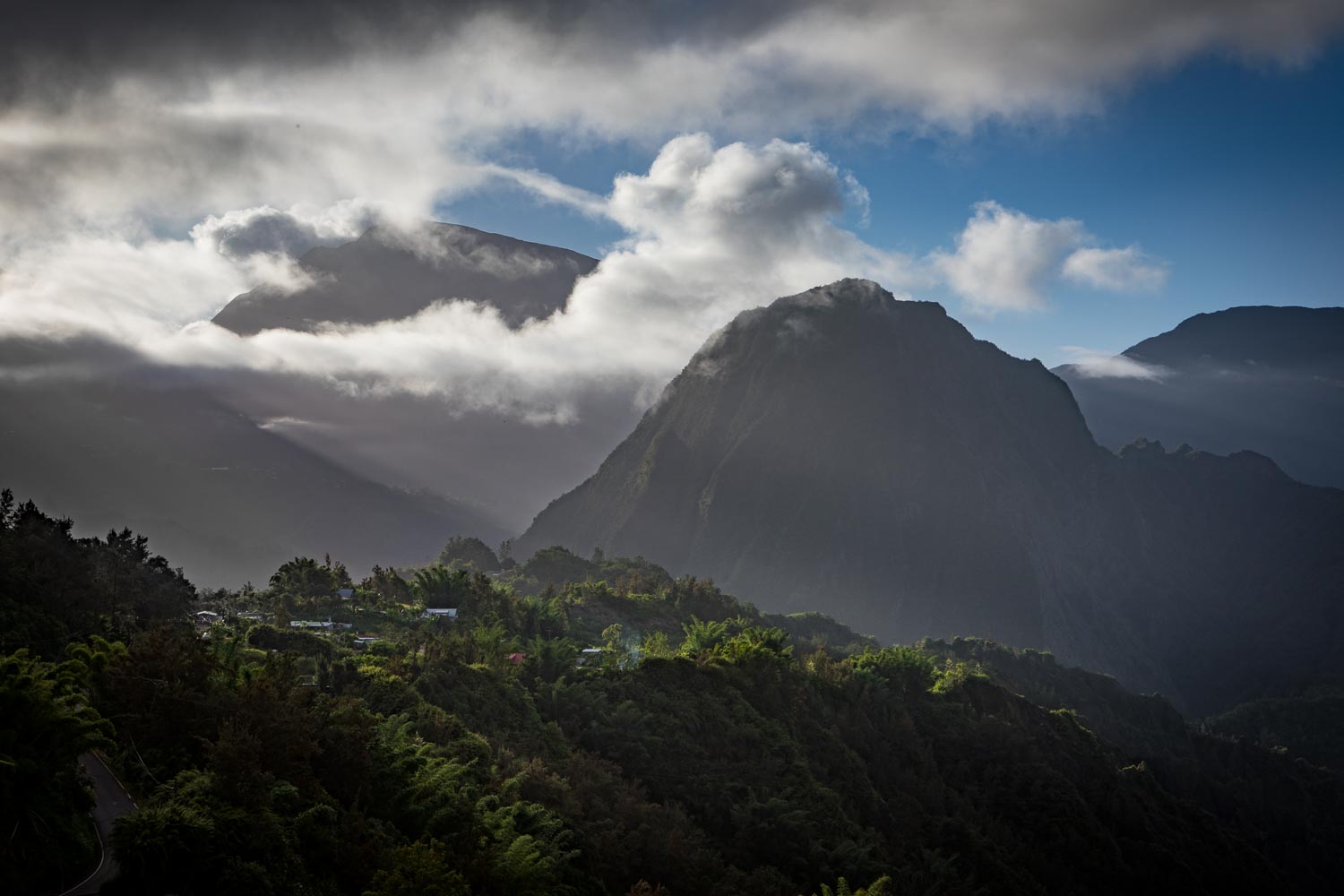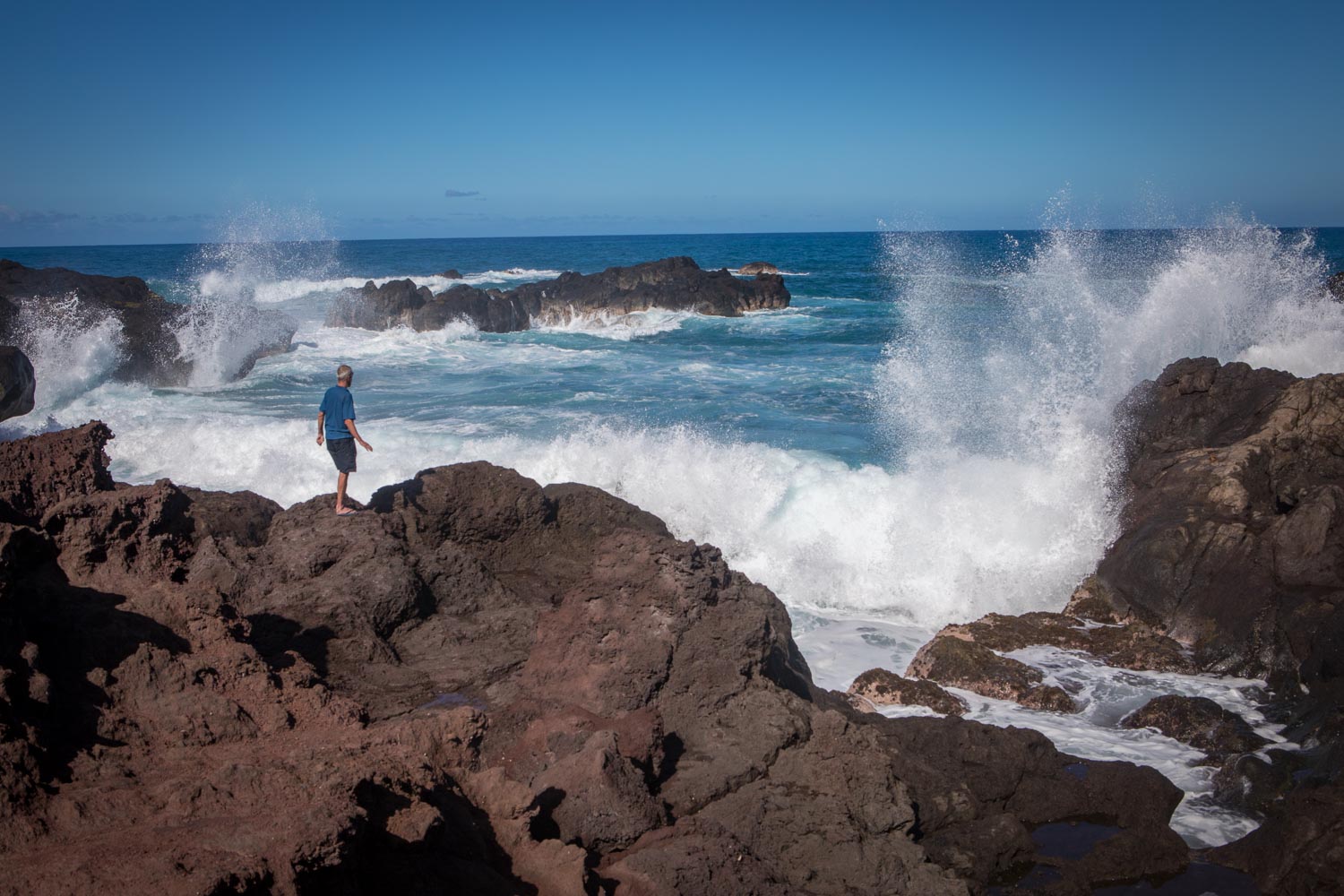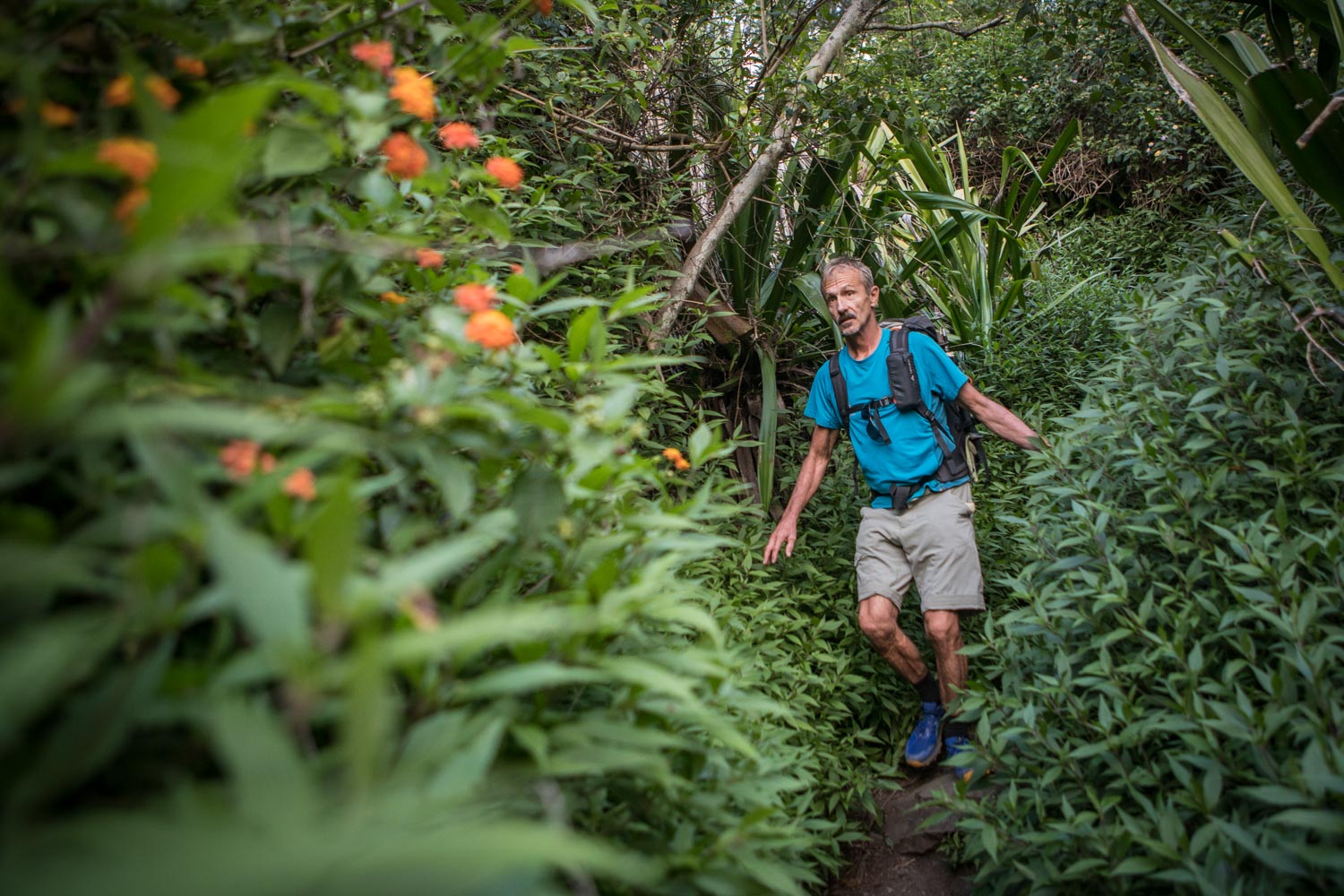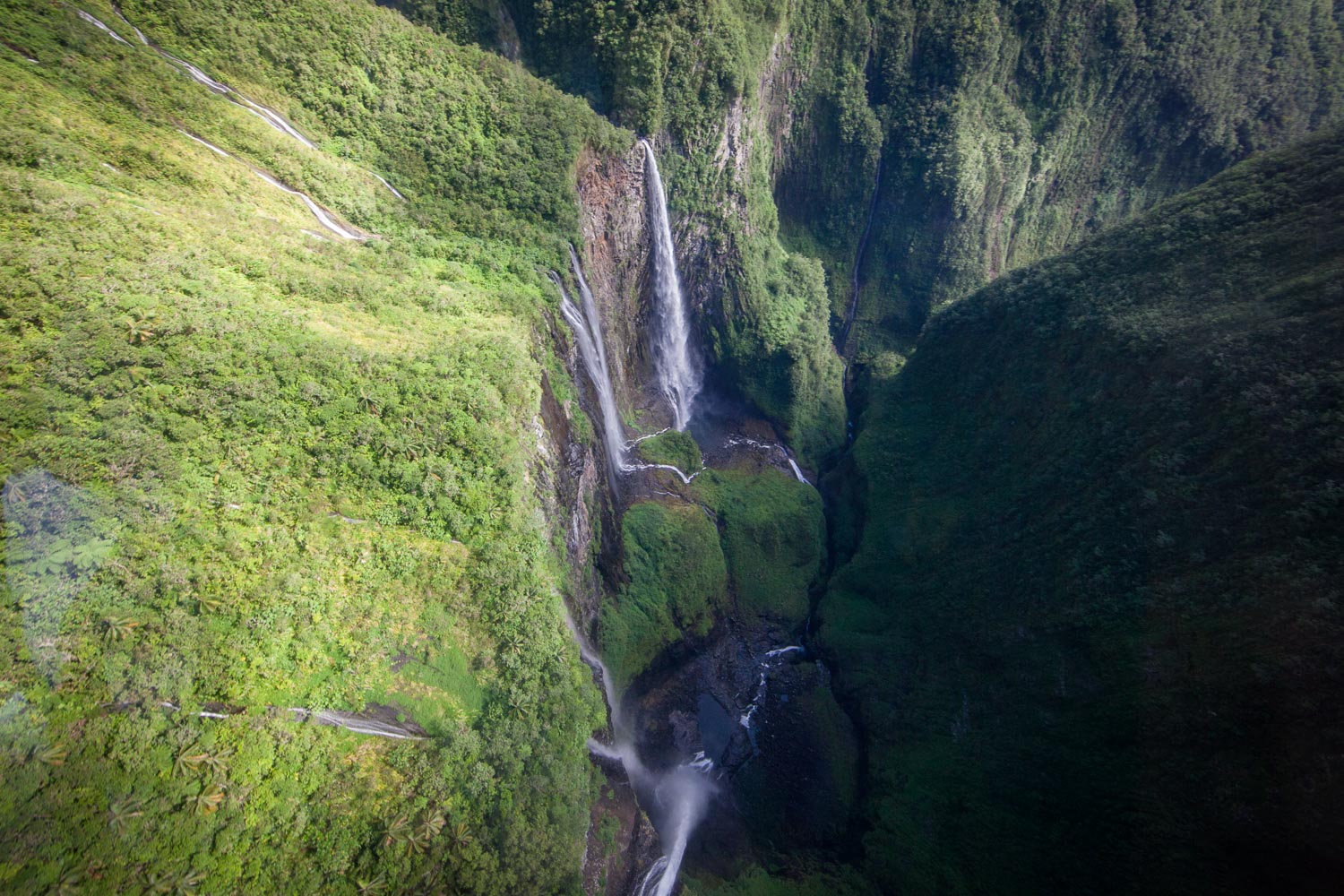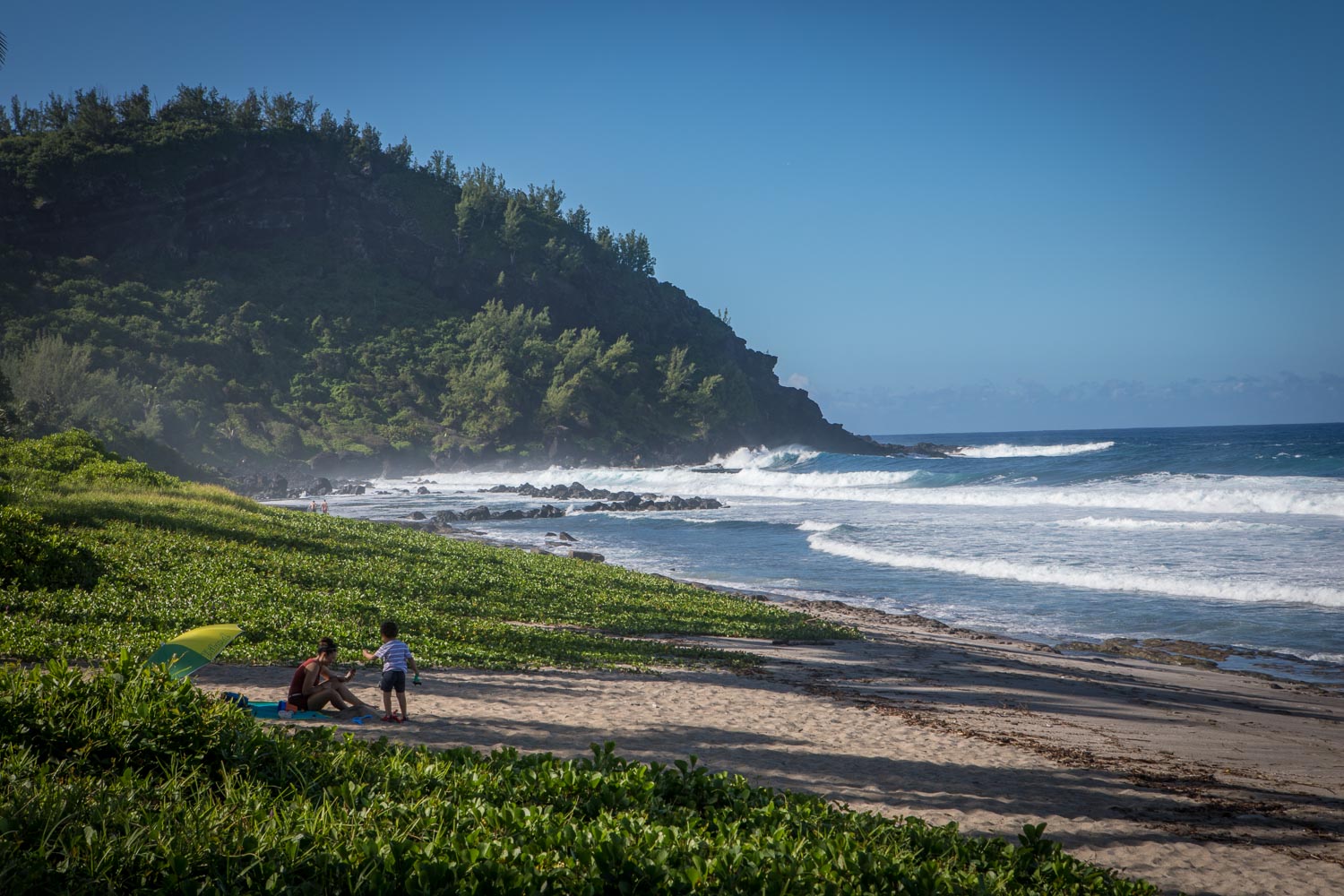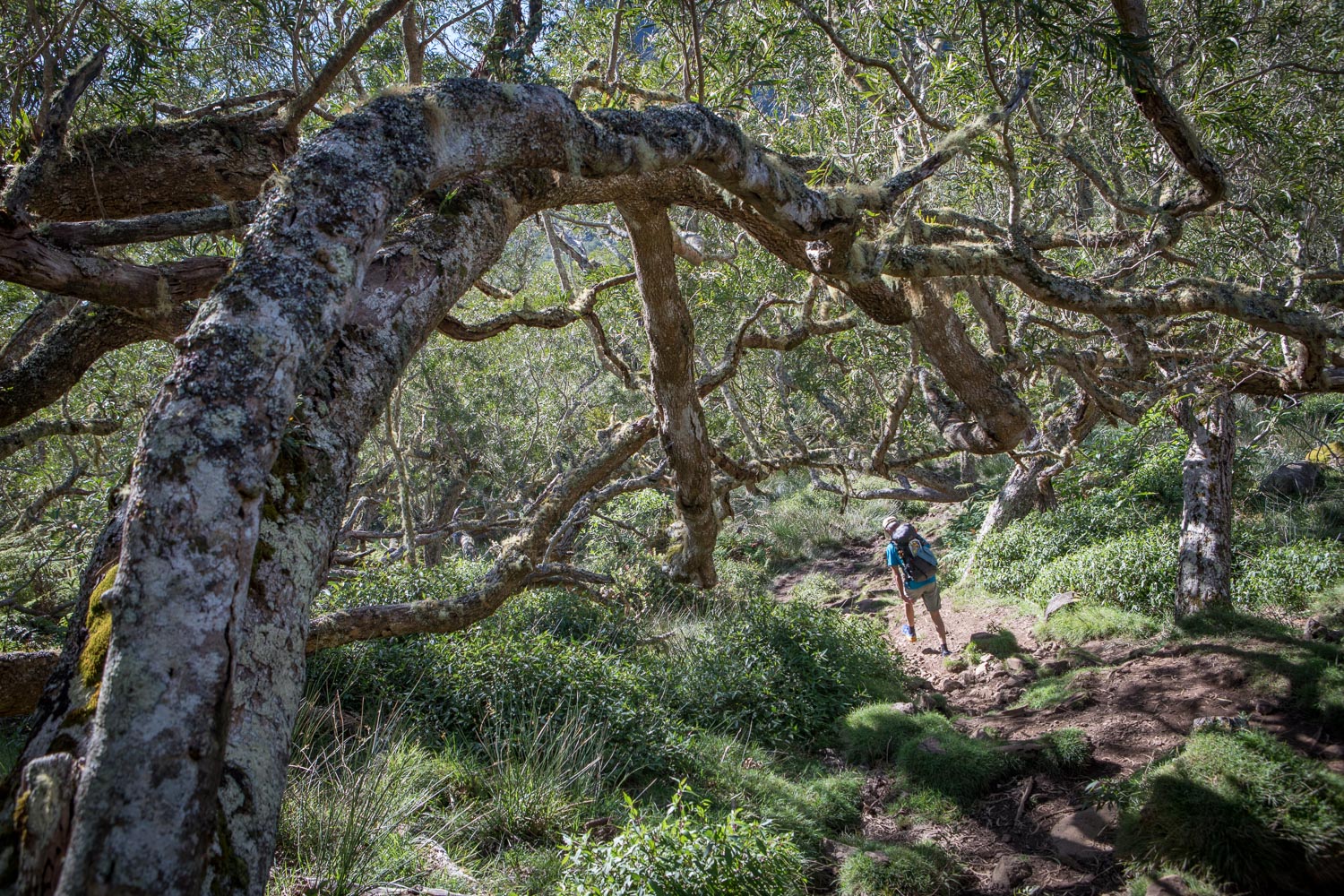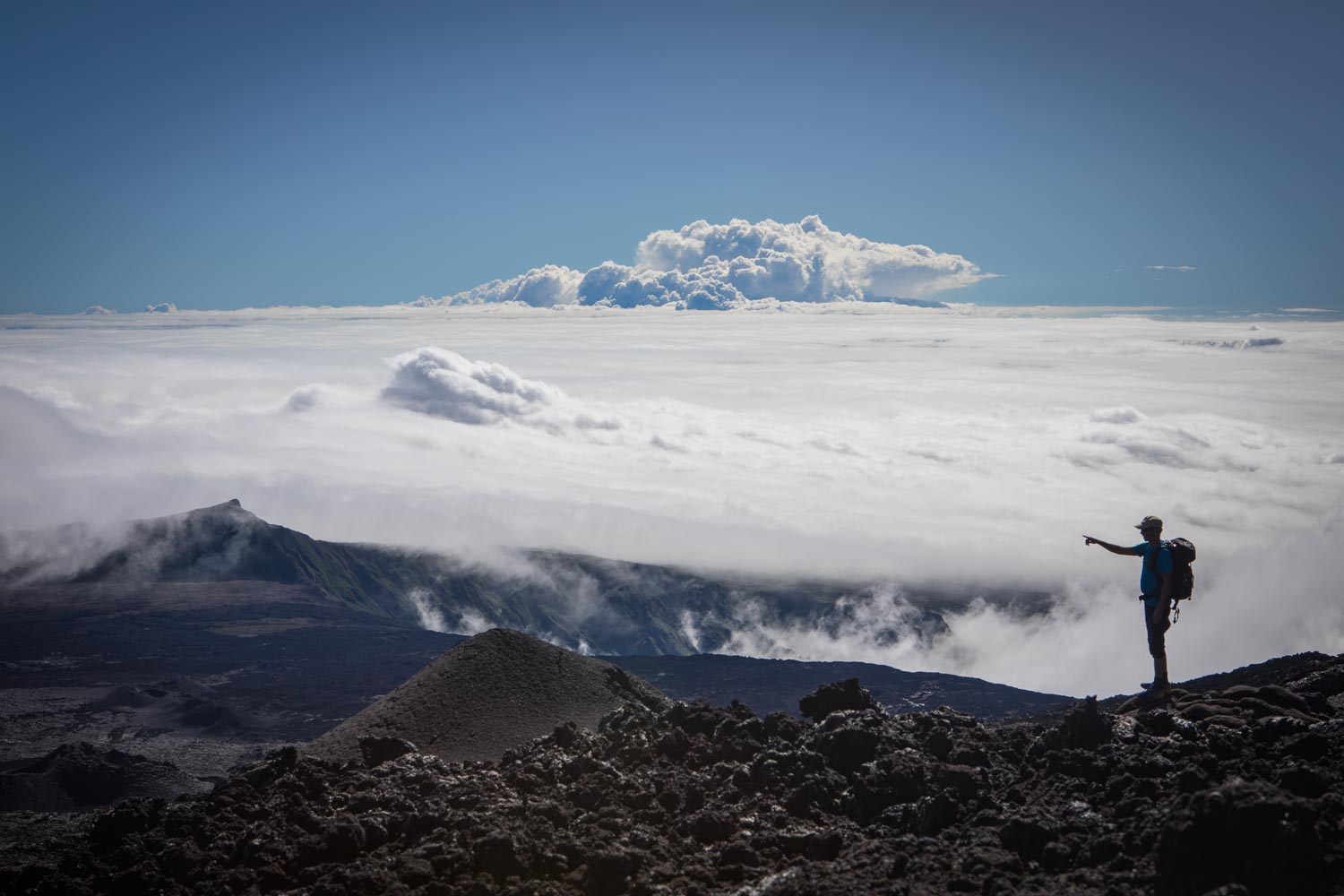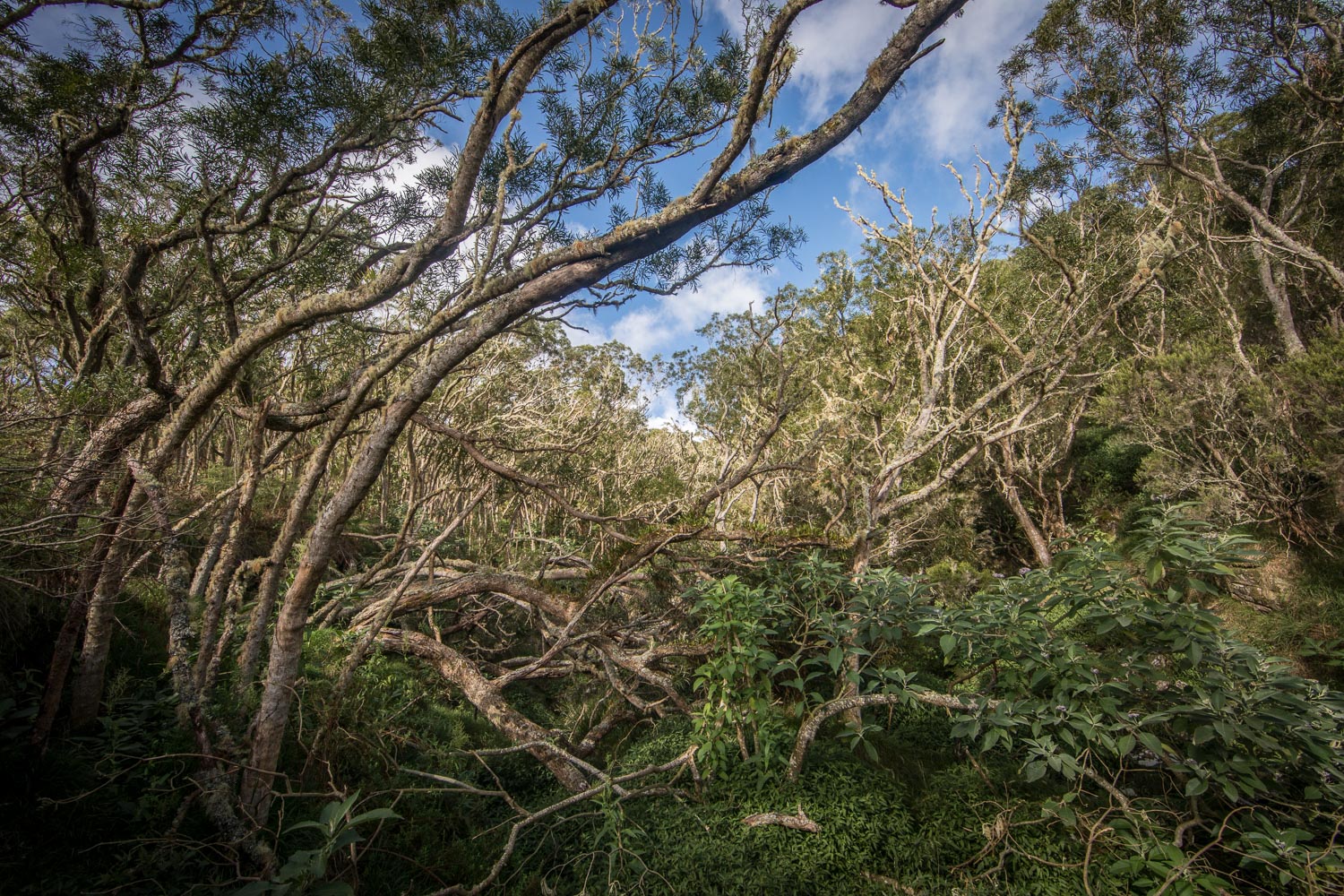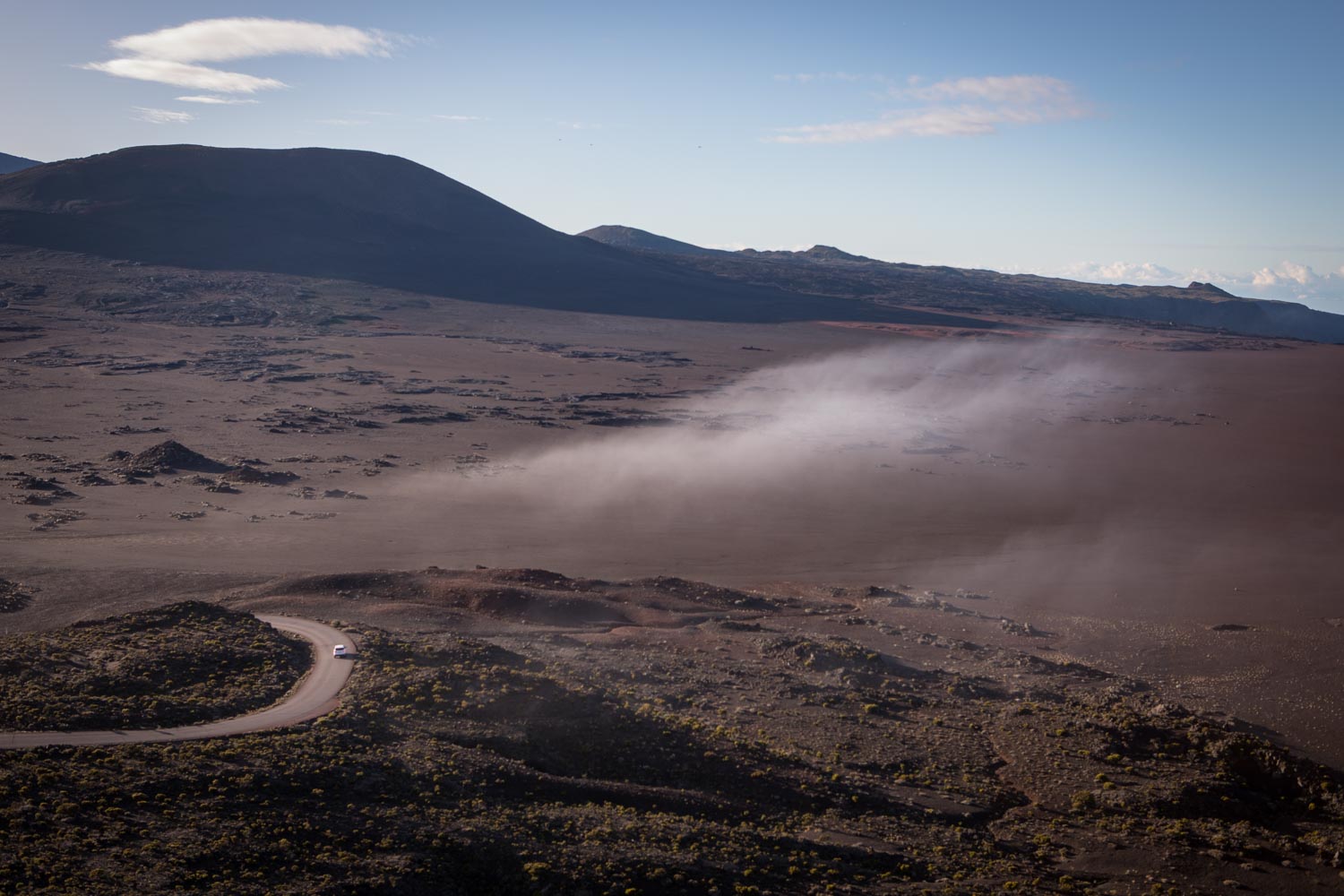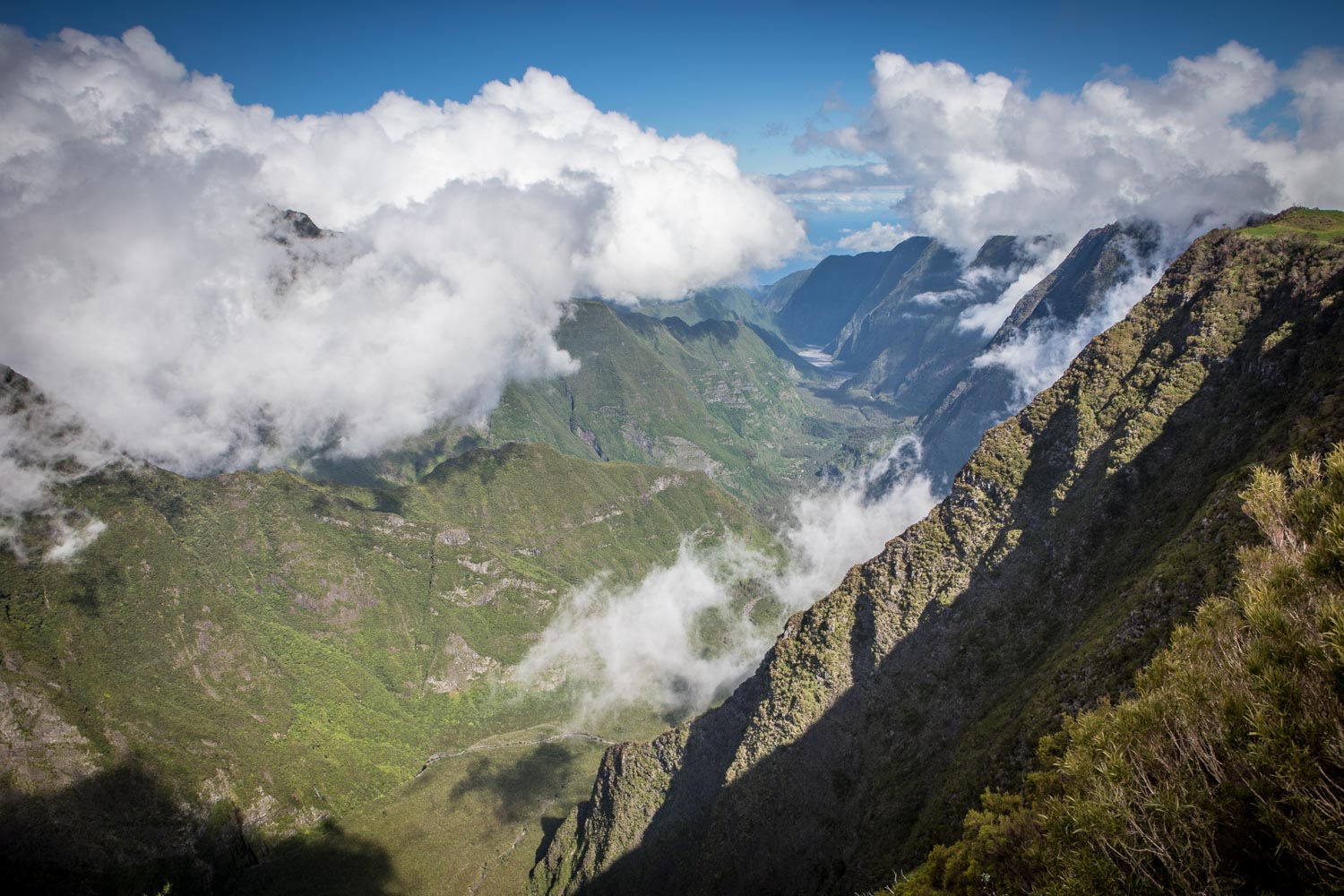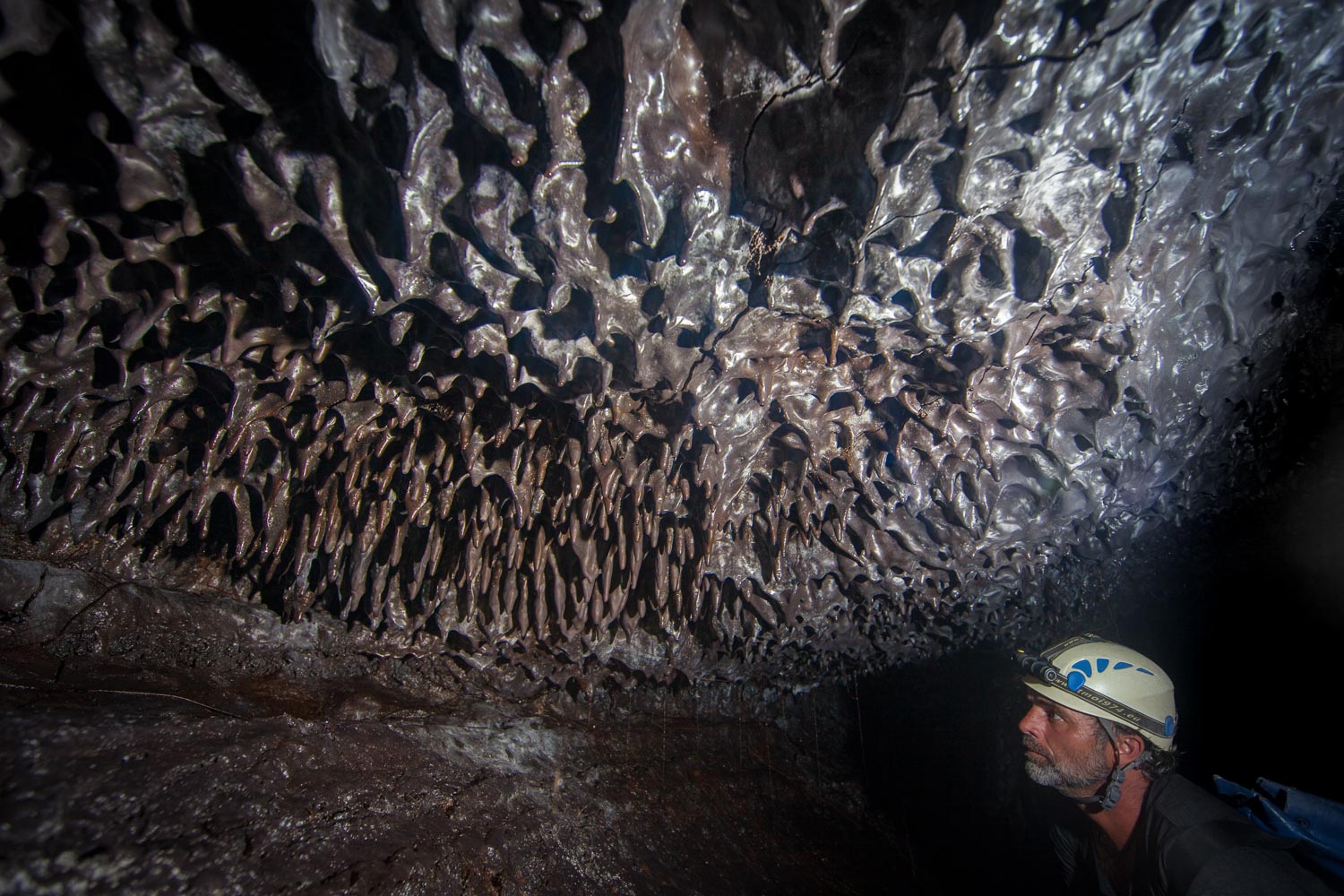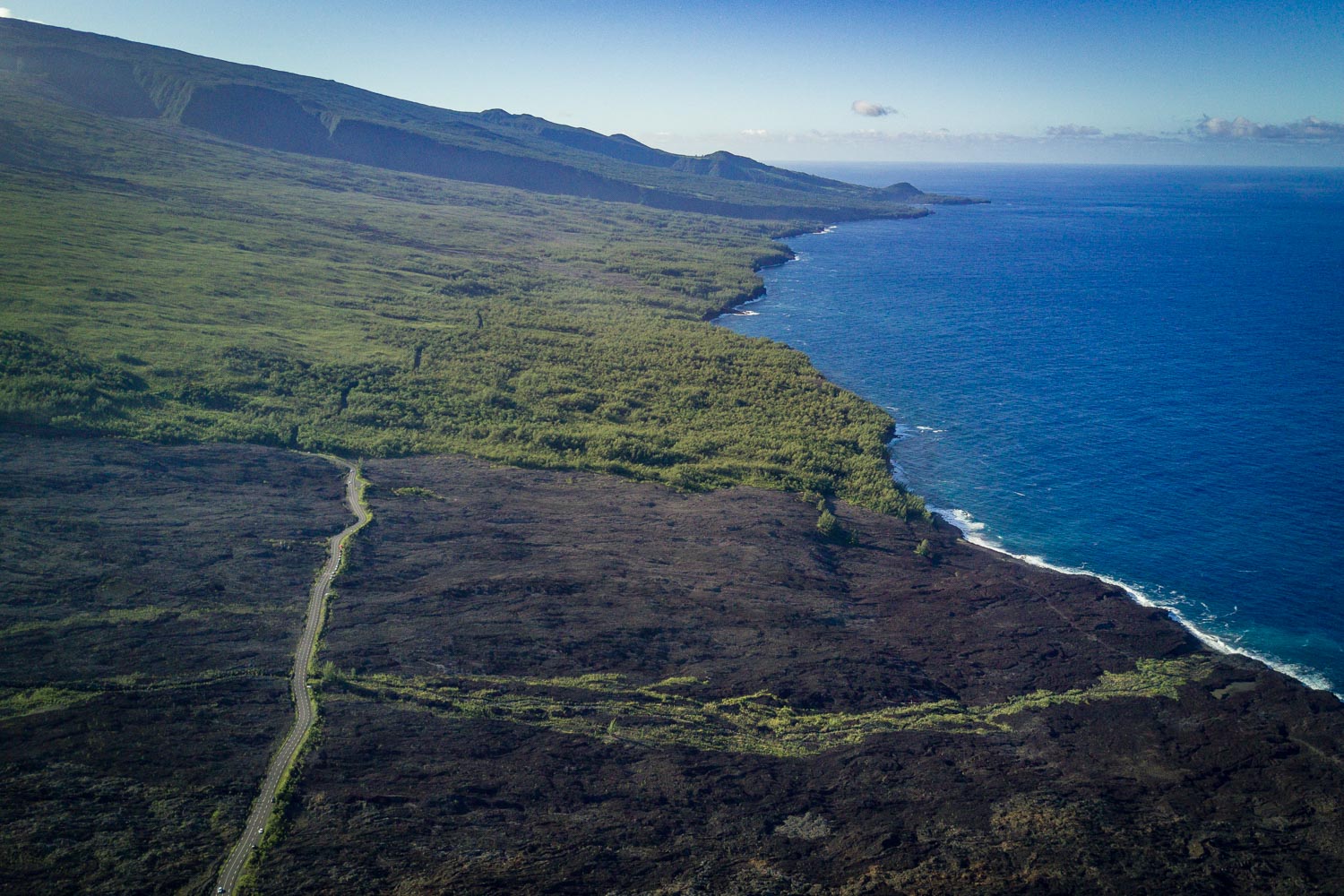Published in:

Germany’s biggest nature travel magazine
12 pages | text & photographs
‘Like a trip around the world in a few days’ comes to my mind as the Airbus H130 helicopter from Corail Helicopters comes in for touchdown to spit out the six of us dazed by the beauty of the island. In the 45 minutes, we marveled at the island’s highlights: coastal scenery, ocean, three valley basins with their steep cliffs up to 1,000 meters high, an almost inaccessible gorge with waterfalls, untouched high-altitude forests and a desert-like sandy plain, at the end of which sits one of the world’s most active volcanoes.
I could hardly have imagined a more compact summary and a more beautiful conclusion to my trip on what is probably one of the most diverse islands in the world.
But now one thing after the other.
Award-winning and prone to falling
He doesn’t seem to like it at all that we are near him and watching him. Nervously, the red-eared bulbul bounces around on the branch and scolds at us at the top of his lungs. We would comply with his warning call, if only he wasn’t such a magnificent creature. So I don’t let up and press the shutter a few more times. Please bear with me, feathered friend.
Just two hours before I hopped out of the plane and already now the island has completely absorbed me.
“Look, a Réunion Red-billed Bulbul, they are quite shy. And rare!” Christoph Kindler, nature expert, even more nature lover, geologist, sportsman and my La Réunion guide for the next few days, tells me. He points to a tree on my left.
I recognize the bird by its striking orange beak. “In the past, the bird got fried on feast days,” Christoph explains, shaking his head, “nowadays some still keep it as a caged bird, which of course isn’t okay either.”
A ranting Red-whiskered bulbul.
Just two hours before I hopped out of the plane and already now the island has completely absorbed me. There is no trace of flight fatigue anymore, my childlike curiosity releases new energy, for which I have plenty of reasons. A few minutes after the bird watching I gleefully steer the rental car along the many curves of the almost impeccable asphalt roads.
I am neither a car fan, nor am I eager to drive, but here, sorry, here I am just enjoying it. Motorcyclists should also get their money’s worth here. Now and then, however, caution is called for: unlit tunnels or water rushing down from overhanging rocks do require attention.
A green climbing plant appears dominant to me, its many leaves, about the size of a hand, covering several dozen square meters.
On the drive into the Cirque de Salazie, the greenest of the island’s three basins, countless fruit-trees pop up on both sides of the road: we recognize avocado, persimmon, peach and medlar trees as well as bushes of the Brazilian guava.
A green climbing plant appears dominant to me, its many leaves, about the size of a hand, covering several dozen square meters.
“They’re called chouchou here,” Christoph explains to me, “directly translated that would mean ‘cabbage cabbage.’ It’s also called chayote, christophine, or fence beet, and it’s one of the cucurbits.
The fruit looks a bit like an overgrown pear. The Reunionese use the fruit mass for ragout, gratin, salad, cake or jam. And where we go, there’s even a Chouchou Festival in July: three days of partying with degustations, produce and events.”
Our destination for the day is no less than the ‘most beautiful village in France’: Hell-Bourg. The village of about 2,000 inhabitants marks the end of the paved road. Here time seems to have stood still. Few if any signs of modern life exist, such as telephone or electricity poles, let alone tall or modern buildings.
Many villas of the colorful Creole style have been renovated, and most houses are made of wood. The terraced village allows many wide views into the valley basin with its rugged cliffs.
On the hike to the waterfall ‘Trois Cascades’, Christoph points to an uninhabited spot just outside Hell-Bourg: “There, at the end of the 19th century, an entire village susided due to a landslide. Sixty people died. Geologically, Reunion is very active, with some villages moving up to two meters a year. That’s a big issue for us residents, of course.”
View over Hell-Bourg into the Salazie valley basin.
In the evening, on the way from our hotel le Relais des Cîmes to the diner, the street lights suddenly go out, and instantly it’s pitch black. Christoph explains to me, “It’s deliberate. Because now is the time when the young ‘Petrels de Barau’, the young Barau petrels, are fledging. The bright light attracts them and they often injure themselves in the process. So the animal rights activists have enforced: lights off.”
Steam in the valley basin
Ouch. The monitor image of my drone does not bode well. A few seconds earlier, I had launched it from the D52 highway to dare a look over the roadside. This now breaks off abruptly and the monitor reveals a huge valley, which can only be guessed at from the road.
Clearly reassured, I continue to steer my aircraft over the gigantic valley basin.
“And that’s where we want to go down?”, I ask Christoph a little bashfully. “Yeah, sure,” he laughs, “but not here. Further up, you can easily walk down the stairways.” Clearly reassured, I continue to steer my aircraft over the gigantic valley basin.
Anticipation rises. Now I recognize a landscape that is unparalleled: enormously steep crater walls, in which a few small houses are lost and can only be recognized as tiny spots. Veils of clouds and fog waft around, then reveal floodplains, forests, green areas and bizarre rock formations.
Christoph plays a little game with the waves at Cap Méchant.
Twenty minutes later, we begin our march into the UNESCO World Heritage Site, at the center of which lie the three basins of Salazie, Cilaos and Mafate. The latter is the destination of our hike, it can only be reached on foot.
The three basins around Piton des Neiges are arranged like a cloverleaf. In 2010, the volcanic landscapes, basins, plateaus and surrounding escarpments were classified as a UNESCO World Heritage Site. Today, they represent more than 42% of Reunion’s island area.
“That’s a dyke. They form when magma rises and is forced into these fissures.”
The easy descent via stairs helps us to cope with the 600 meter altitude difference. At the bottom of the stairs we get into a fairytale tamarind forest. Knotweed blossoms and false vine line the path to La Nouvelle. From here on we meet very few hikers, because most of the visitors are day visitors and turn back in La Nouvelle.
Shortly before our destination for the day, Marla, we discover a large bush with Lantana.
We continue walking along the river, marveling at a deep gorge that seems to suck up the river. The Curious Reunion Chat accompany us in the hope that we drop a few crumbs.
Christoph calls my attention to the vertical coloured lines in the wall of the valley basin: “That’s a dyke. They form when magma rises and is forced into these fissures. When the magma is horizontal, it’s called a silt.”
After a river crossing, the trail strives upward. I feel the throbbing of the pulse in my ears. Some consolation for the effort is provided by the many red-purple-yellow Wandelröschen. After the ascent, we continue through a casuarina grove.
Just behind it the village chapel, in which church service is held only every two to three months. Then the priest descends from heaven – by helicopter.
Then a town sign with the inscription ‘Marla’. Are we there? “A few more minutes.” Christoph promises. To our left, a clear-cut area with a huge wood basket filled with large white and green plastic bags.
“This is Marla’s rubbish dump.” Christoph reveals, seeing the many invisible question marks on my face. “Tomorrow it will be picked up. By helicopter.”
I’m impressed. This is the cleanest, most odorless dump I’ve ever seen.
The almost inaccessible and therefore fairytale-like ‘Tour de fer’ gorge.
Marla’s scattered wooden huts are powered by photovoltaic electricity. We pass a pasture with breeding deer. Their meat is very popular with the locals. Just behind it the village chapel, in which church service is held only every two to three months. Then the priest descends from heaven – by helicopter.
Yes, this is a very remote place. A long time ago, fugitive slaves sought shelter here from their persecutors. And found it.
Although Reunion lists over 350 endemic plants, many invasive plants have also established themselves here.
A pair of Reunion Grey-crested birds peep in an impenetrable bush; they seem to be bidding farewell to the day.
The sun is low, the valley walls glow a deep orange, Christoph and I enjoy the peace and coolness of this secluded little place. We stop at the hikers’ lodging at Fanélie César.
A little caution is advised on the beach at Grand Anse, the swell and current can be strong at times.
Hungry and exhausted, we enjoy large quantities of her fantastic curries with a handful of other jovial hiking guests – with red wine, of course, we are in France after all. Only a little later we fall into bed, with bulging stomachs and happy grins.
Bath in the sea of plants
Just after sunrise we leave Marla to take an alternative route back to the starting point of the previous day. Christoph has to exercise patience, because my childlike curiosity makes us stop at almost every blade of grass that I am not familiar with.
I learn interesting facts about plants that I would have ignored in the past. The eggplant species called ‘bringelle’ contains a solvent, which is why its leaves are popular for washing dishes or going to the bathroom.
“Mind you, in that order,” Christoph admonishes me with a mischievous smile.
Although Reunion lists over 350 endemic plants, many invasive plants have also established themselves here. One of the most widespread is the perfumed minger. It is used as an ornamental plant, and its essential oils are sought after in the perfume industry.
Some caution is required on the beach of Grand Anse, the swell and the current can be very strong.
Continuing on, we pass agaves, dombeya mallows and passion fruit, called ‘babardines’ here.
Then we pass another plant whose aromatics are equally coveted: Jumellea fragrans, a species of orchid. Its tasty extract can be tasted in local rums, which is why some of them are considered unique.
Christophe in the tamarind forest on the way to La Nouvelle.
Since we are early, few other hikers are on the paths and we have a bit of luck, we are able to spot a ‘Merle pays’, a Réunion red-billed bulbul, as we did on the first day.
Only a few minutes later a ‘Papangue’, an endemic buzzard circles above us. It’s now on the lookout for rodents or small reptiles.
One species deliberately introduced by humans, however, is Kryptomeria, better known as Japanese spruce, sickle fir or Japanese cedar.
“When the first humans came to the island, there were only two mammals. Namely, two species of bats, also called flying foxes. The wind, especially the stronger ones, the cyclones, blew invasive species here: plant seeds, but also birds.” explains Christoph.
“Most of them perished, only a few survived. Some have adapted or changed from the original species over the centuries or millennia to the point that researchers now classify them as new species.”
Christoph on the way to the summit of the Piton de la Fournaise volcano.
Only a short time later, we come upon sugar cane, which even aggressive cyclones cannot harm, and then many a bizarre plant.
Now I marvel at enormous Erica plants, which I estimate to be four to five meters high. “Everything grows here,” Christoph comments, “it just depends on the altitude.
” Right next to it is a nuxia bush, called ‘bois maigre’ here, which translates as ‘lean wood.’ Its wood is so dense and heavy that insects cannot penetrate and it even sinks in water. Only a short time later, we come upon sugar cane, which even aggressive cyclones cannot harm, and then many a bizarre plant.
A bizarre, enchanted forest on the way to the volcanic peak of Maido.
My amazement almost makes me forget the exertions of the climb to the Col des Bœufs lookout point, if it weren’t for sweat dripping onto the pages of my notebook every now and then.
Volcanic. Hairy. Divine.
The highest volcano in France is located on La Réunion: the Piton des Neiges, which at 3,069 meters is also the highest peak in the Indian Ocean. It is also the origin of the island. Not far from it is the fourth highest peak on the island: Piton de la Fournaise at 2,621 meters.
With five volcanic eruptions in 2019, it is one of the most active volcanoes in the world. Sometimes its lava flows even reach the Indian Ocean, making the island a little bigger. And it is the destination of today’s hike.
It is fantastic to walk on the abrasive rock, the sole seems to literally stick to it.
Every visitor is amazed by the ‘sand plain’, the desert-like ‘Plaine des Sables’. Because only moments before, each vehicle crosses a dense forest area with switchbacks. This ends abruptly with an almost endless view of a Martian landscape.
You have to take that in first. Like many others, we park, get out, wonder. Twenty minutes later, jolted thanks to hundreds of potholes, we get out of the vehicle at the Pas de Bellecombe, put on our backpacks and set our sights on the volcano’s summit.
I still can’t believe that I’m trudging through a kind of lunar crater here, over knitted lava that reminds me of a tablecloth pushed together and over sharp-edged chunky lava, also called ‘gratons’, pork cracklings, by the Réunionese.
A landscape like on Mars: the Plaine des Sables.
It is fantastic to walk on the abrasive rock, the sole seems to literally stick to it. I ask Christoph about the white dots that seem to prefigure the route. “Yes, that’s not to be underestimated,” he replies, “in fog, which can appear up here in no time, the white dots are the only points of orientation.”
“These are the hair of the goddess Pélé”
Then, at one point, I spot fine, yellow fiberglass-like crystals on the ground. “These are the hair of the goddess Pélé,” Christoph enlightens me, “at least that’s the name. Geologically, this is volcanic rock, what is called hair obsidian.
It is formed from very fluid drops of lava, which are expanded by strong winds into long, thin threads. And the name Pélé goes back to the Hawaiian goddess of fire and volcanoes.”
The route, now steeper, allows ever more magnificent and wider views of the landscape, interspersed with clouds.
Not far from the road, you can look into the fantastic Langevin valley.
It is a grandiose natural phenomenon. After about three and a half hours, we reach the edge of the caldera, which was formed by a violent eruption in 2007. We look down 236 meters.
The Eiffel Tower would easily find room in it. After a short snack we quickly start our way back. We still have an appointment for an interview with a volcanologist.
Lava parade in the wild south
After we crawled yesterday on the outer skin of the volcano, today we go inside: into a lava tunnel. For this we have an appointment with Ludo from Terre Camaléon at Route Nationale 2.
“Welcome to the nouveau territoire, the new territory!” he greets us. “Twenty years ago, none of this existed!” he says, turning once in a circle with his index finger extended.
The enormous lava flows of the numerous eruptions poured over several square kilometers and raised the surface by up to sixty meters.
To do this, we have to march for a few minutes. I am amazed at how quickly mosses, ferns, lichens, orchids and smaller shrubs have taken over the lava again.
La Réunion is one of the twenty or so places in the world with lava tubes. These only form under very specific conditions and are also much rarer than the approximately 1,500 active volcanoes on the globe.
For a lava tunnel to form, several conditions must be met: a slope angle of no more than five degrees of incline, a special viscosity of the lava, which means it must be neither too thick nor too thin, the amount of lava and its flow rate are crucial, and an entrance must also exist. All this applies to the lava tube we want to enter in a few minutes.
To do this, we have to march for a few minutes. I am amazed at how quickly mosses, ferns, lichens, orchids and smaller shrubs have taken over the lava again. Larger rosary and pioneer trees, however, did not grow until ten years after the eruption.
Lava tunnel guide Ludo below a large collection of lava drops.
Christoph points out a completely inconspicuous plant to me. “Just watch out for this one,” he warns, “the Bois de Rempart, is poisonous. They say one leaf can kill a bull. When burned, the smoke is toxic. And you can’t eat honey from the flowers either.”
We descend into a manhole about two meters further down. In the glow of the powerful helmet lamp, an alien world reveals itself. “The tube is about six kilometers long, probably the twelfth longest in the world,” Ludo explains.
“You have to imagine the formation of a lava tunnel like a chocolate cake fresh out of the oven. The surface cools slowly, but inside it’s still hot and liquid, between 1,000 to 1,200 degrees hot.
Although the ceiling of the lava tunnel is up to four meters thick, a few strong root strands have made their way through and dangle down.
The differential cooling creates the space that later becomes the tunnel. We scramble thirty minutes a piece into the tunnels. It took the lava three days to travel the same distance.”
The dissimilarly cooled lava has created the craziest shapes and figures. Some walls resemble milk skin pushed together, while other lava flows still appear to be flowing or dripping from the ceiling.
Although the ceiling of the lava tunnel is up to four meters thick, a few strong root strands have made their way through and dangle down.
And then it gets tight, we have to crawl. The knee pads prevent clothing and skin from being torn open. Ludo lights the ceiling and asks, “Why are there no roots here?”
Ludo turns off the light. Total darkness. Then I hear, very softly, the sound of a car driving by. Because we are under the road!
Another mystery: Ludo points to a hole where half a lantern could fit, yellow sulfur deposits shine inside. I am asked how this cavity was made. No idea. Then I learn that a tree was stuck in there. Once the lava carried away the tree trunk, which turned in the flowing lava.
Finally, the lava completely engulfed the trunk, whereupon it dissolved into gas. Left behind was this yellow tube, a silent witness to the rare chemical process in which a solid transforms into gas: sublimation.
From the air, the lava flows from Piton de la Fournaise are clearly visible.
An island like no other
Where else in the world can you splash in the sea in the morning, walk in the rainforest at noon, and marvel at a desert with an active volcano in the afternoon? Reunion offers the most diverse variety of landscapes, vegetation and cultures that I know. It’s a great destination for recreationists, nature lovers, and extreme adventurers. And everyone in between. Au revoir, ma belle île!
Order TERRA MAGAZINE here (only in German):
Print and digital edition
Read now:
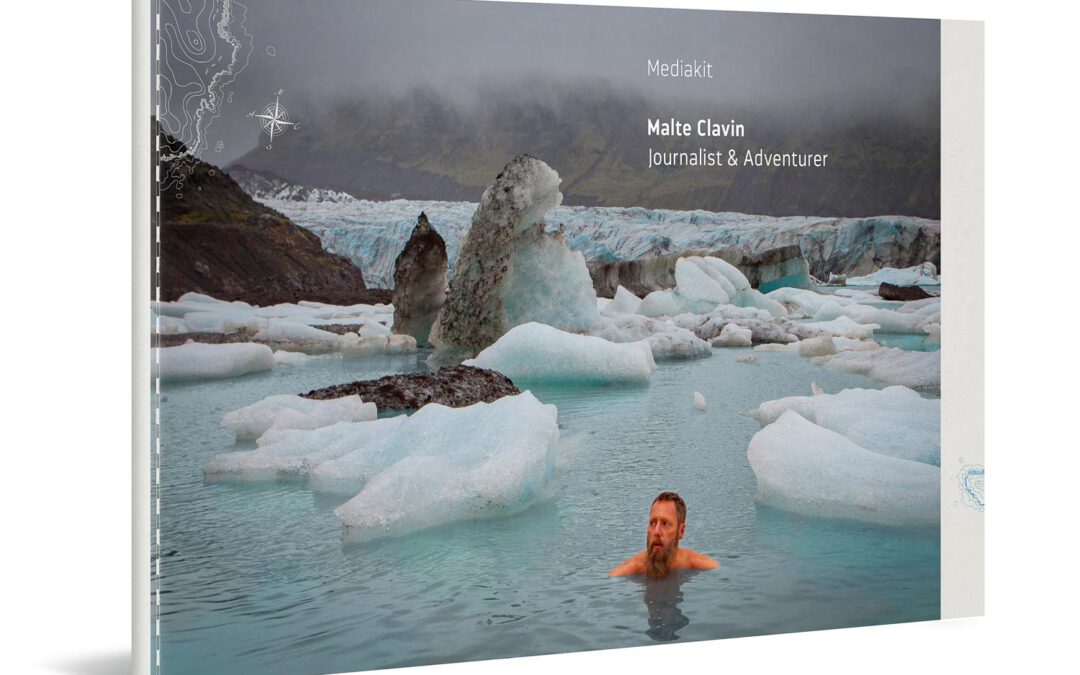
Pure inspiration
My new media kit 2025
< 1 Min.In this brand new 28-page media kit, I show you my work as an adventure journalist and speaker: Expeditions, travels, challenges – everything that excites me. Let yourself be inspired.
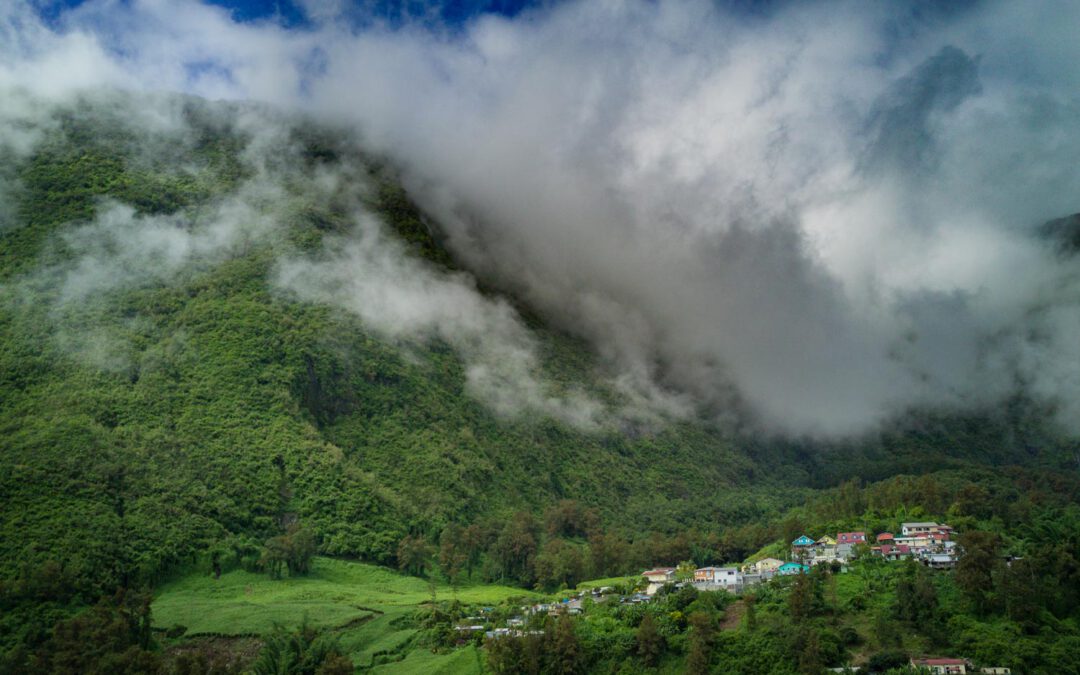
A piece of France in the Indian Ocean
La Réunion photo gallery
2 Min.Fantastic hikes through deep valleys, long lava tunnels and high volcanoes – that is La Réunion. While roaming the island, I was amazed – also at the varied bird life, crooked trees, oddball volcanologists and the scent of what is probably the best vanilla in the world.
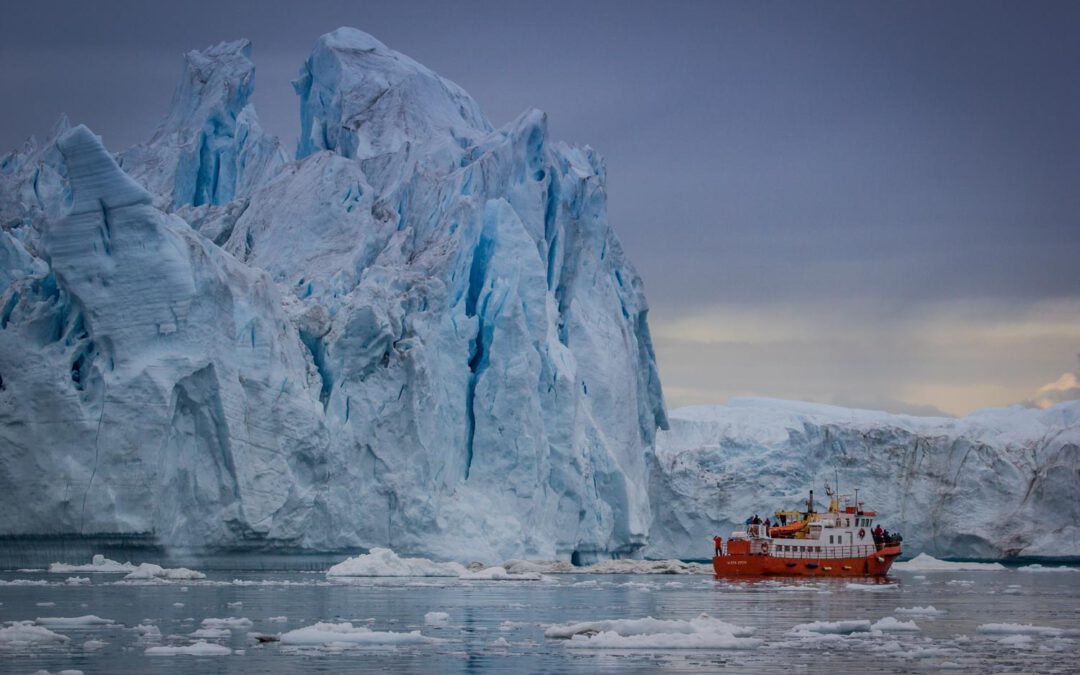
With scientists on board
Arctic photo gallery
< 1 Min.On board the ‘Resolute’, a comfortably equipped ship under the flag of the Royal Canadian Geographic Society, zoologists, ornithologists, oceanographers and glaciologists will conduct scientific surveys and counts over the next 10 days. And in the middle of it all, me, as a ‘temporary researcher’.

